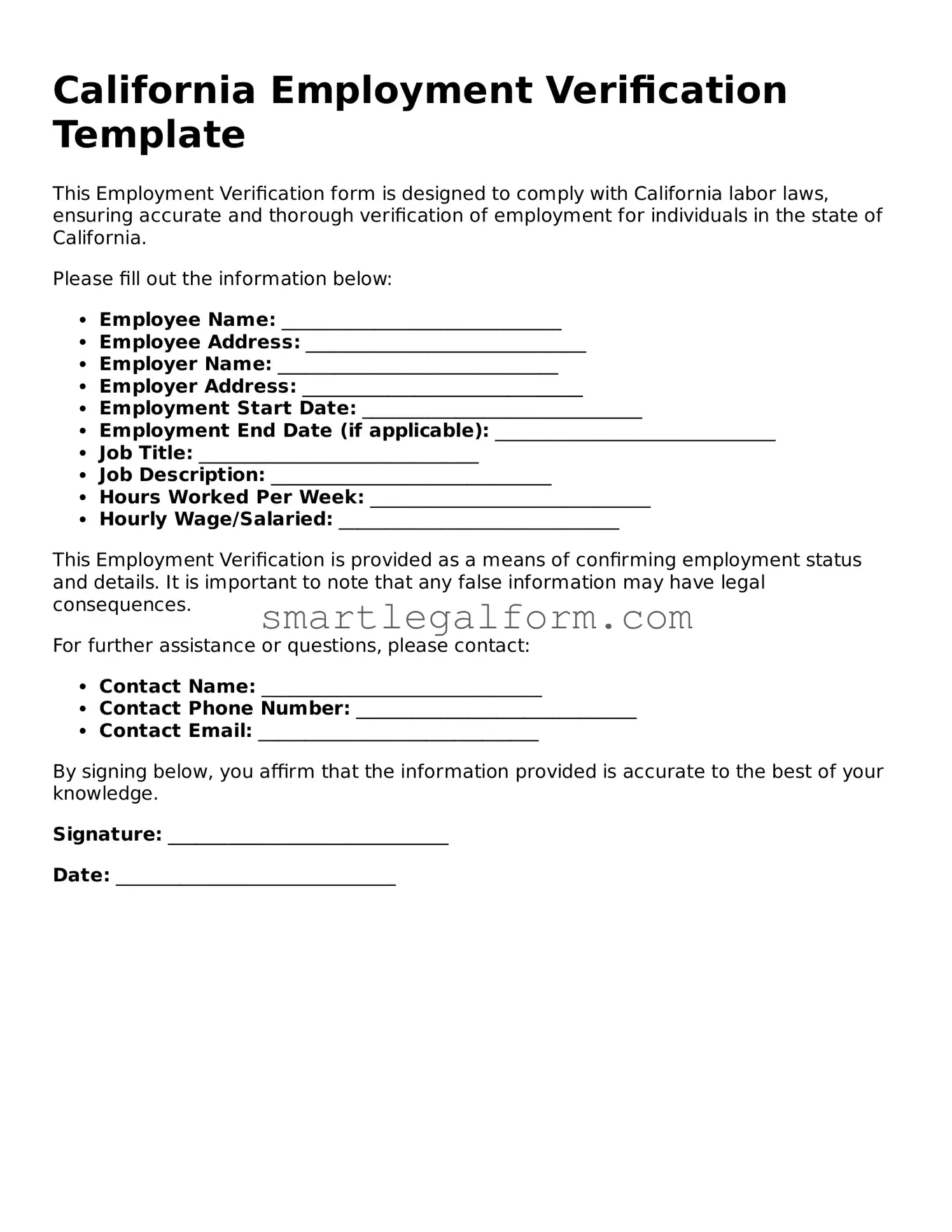Filling out the California Employment Verification form can be a straightforward process, yet many individuals encounter common pitfalls. One frequent mistake is failing to provide accurate personal information. This includes the employee's full name, social security number, and date of birth. Inaccuracies can lead to delays in processing and may even complicate employment verification.
Another common error is neglecting to include the correct dates of employment. It is essential to specify both the start date and the end date, if applicable. Incomplete or incorrect date information can raise questions about the employee's work history, which may hinder the verification process.
Many individuals also overlook the importance of detailing job titles and responsibilities. Providing a comprehensive description of the employee's role helps verify their qualifications and experience. Without this information, the form may appear incomplete, leading to potential misunderstandings regarding the employee's capabilities.
Additionally, some people forget to sign and date the form. A signature is necessary to validate the information provided. Without it, the form may be considered invalid, resulting in further delays and the need to resubmit the documentation.
Another mistake involves using outdated or incorrect contact information for the employer. This can make it difficult for the verifying party to reach out for confirmation. It is crucial to ensure that the employer's name, address, and phone number are current and accurate.
People often misinterpret the instructions for completing the form. Each section has specific requirements, and misunderstanding these can lead to incomplete submissions. Taking the time to read and follow the instructions carefully can prevent this issue.
Moreover, some individuals fail to provide supporting documentation when required. This could include pay stubs or tax forms that validate the information presented on the Employment Verification form. Such documentation can enhance the credibility of the submission and expedite the verification process.
Lastly, a lack of attention to detail when reviewing the completed form can result in overlooked errors. Before submitting, it is advisable to double-check all entries for accuracy and completeness. This simple step can save time and prevent complications in the verification process.
